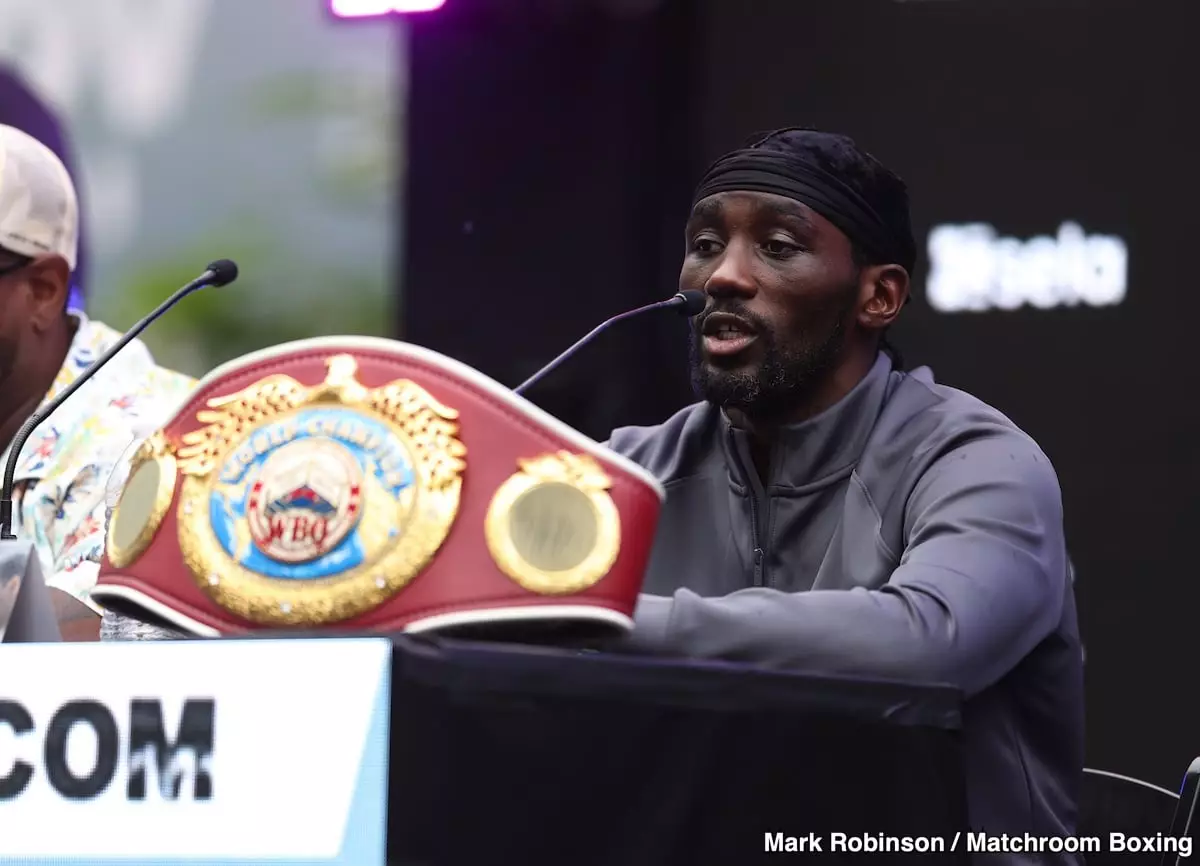Terence Crawford’s recent grievance toward Canelo Alvarez unveils an ongoing discourse in the boxing community regarding legacies, matchmaking strategies, and the inherent challenges fighters face in cementing their status as legends. Crawford’s remarks prompt an examination not just of his record, but of the broader implications of legacy-building in modern boxing.
Crawford expressed his frustration after Canelo Alvarez stated that Crawford has only defeated a single high-caliber opponent, Errol Spence. With a record of 41 victories, including 31 knockouts, Crawford has maintained an undefeated status for nearly two decades. However, Alvarez’s comments reflect a critical observation—that much of what defines a champion’s resume hinges on the quality of opponents faced, rather than sheer numbers.
Crawford’s rebuttal, filled with sarcasm and passion, highlights a critical point: the perception of his competition has remained dubious among boxing analysts. While Crawford maintains the ability to make fighters appear lackluster—a feat not easily achieved—one must wonder: does this alone warrant the prestigious accolades he often receives?
Canelo’s assessment that Crawford’s most notable victory is marred by doubt raises essential questions about the current state of boxing competition. The notion that Crawford has convincingly “beaten” Spence must be weighed against the backdrop of Spence’s well-documented struggles following a life-threatening accident. It challenges the criteria by which matchmakers and promoters prioritize bouts and champions.
In a sport where legacy is intrinsically tied to the caliber of opposition, Crawford’s journey raises eyebrows. Has he been handled with kid gloves, or has he made pragmatic choices to ensure his longevity and commercial viability?
Analyzing Crawford’s reluctance to confront emerging contenders such as Jaron Ennis or established threats in higher weight classes reveals a strategic hesitance. This adaptability illustrates an underlying conflict many elite fighters navigate: the balance between seeking legacy-affirming fights and sustaining their careers.
Crawford’s promoter and management bear responsibility as well. They must navigate the treacherous waters of matchmaking to forge a path that combines competitive spirit with financial gain. However, this often results in a cyclical disservice to both fans seeking competitive matches and the fighter’s own pursuit of lasting legacy.
Promoters play a substantial role in shaping a fighter’s narrative. Crawford’s trajectory aptly demonstrates how athletes can become beneficiaries—or victims—of their promotional environments. The cautious matchmaking seen throughout Crawford’s career might serve to protect his undefeated record and enhance marketability, but it simultaneously raises questions about authenticity and accountability.
The shift in boxing culture towards calculated matchups further complicates Crawford’s acclaim. Are we witnessing a fighter carefully curated into a champion, rather than one who has genuinely overcome the sport’s greatest challenges?
If Crawford wishes to carve out a legacy that withstands the test of time and assertion from his peers, the pathway is clear. He must step outside of his comfort zone, moving up in weight or daring to face challenges before being deemed a serious contender for a fight with Canelo. The sport of boxing thrives on the narrative of ‘who will face the best?’ And as it stands, a reluctance to engage beyond a certain tier may taint Crawford’s reputation no matter his undisputed status.
This spirited back-and-forth between Canelo and Crawford serves as a potent reminder of the complexities of legacy in boxing. Individual talent is commendable, but the narrative surrounding legacy is crafted through the lens of opposition faced and battles fought. As the sport evolves, so too should the fighters’ willingness to step into the ring against the proverbial lions that encapsulate their eras. As it stands, Crawford’s story is not yet fully written; the ink remains flowing, awaiting decisive action to frame a legacy that goes beyond opinion and conjecture.

